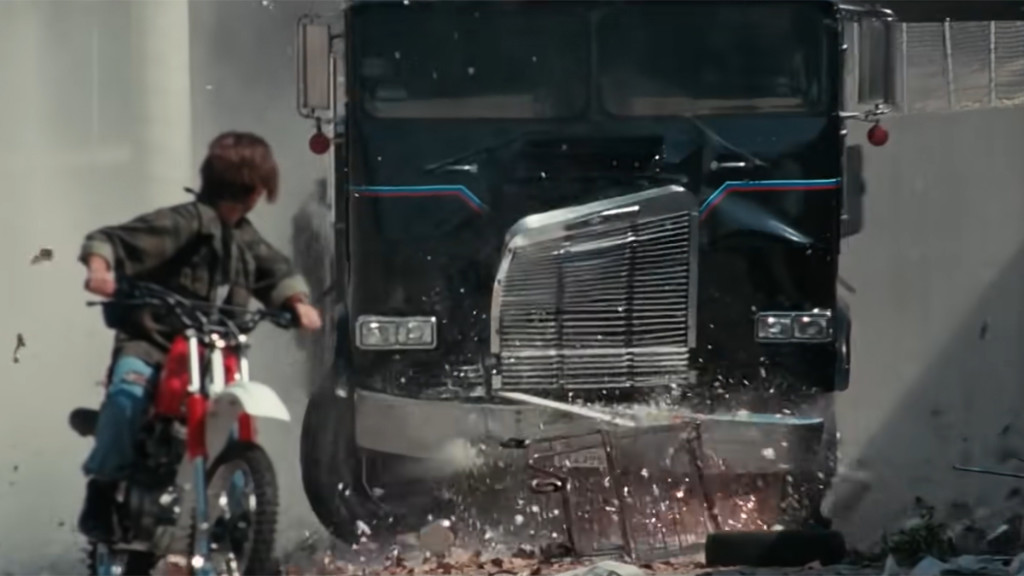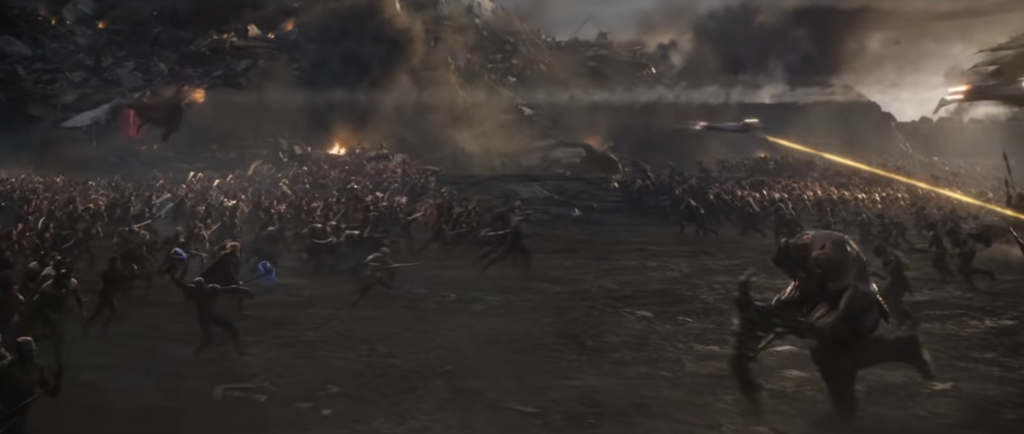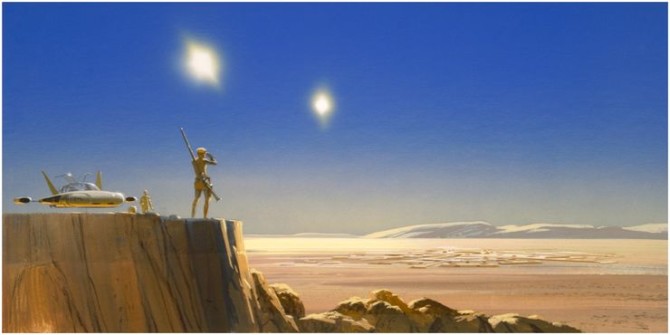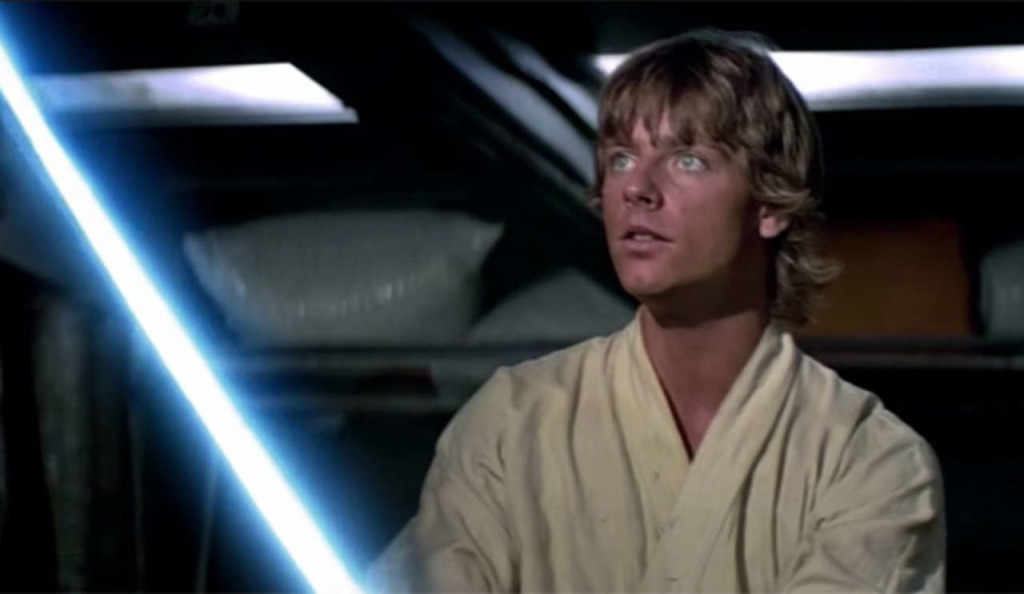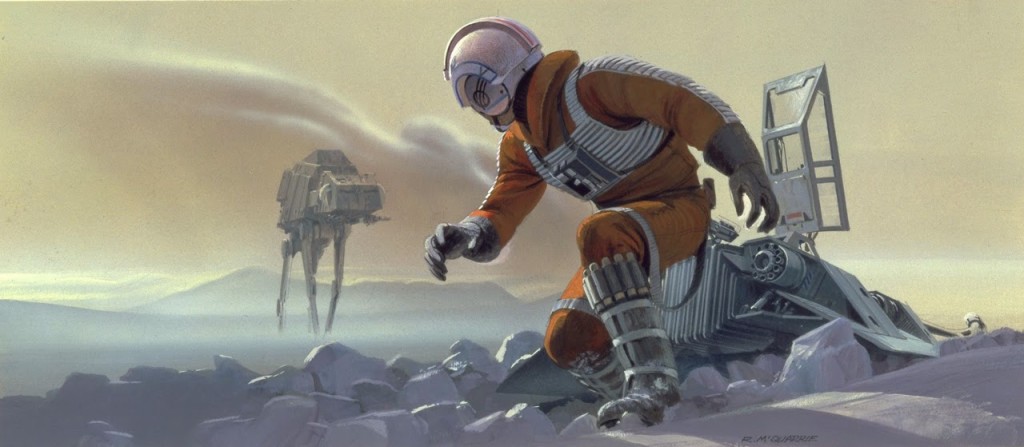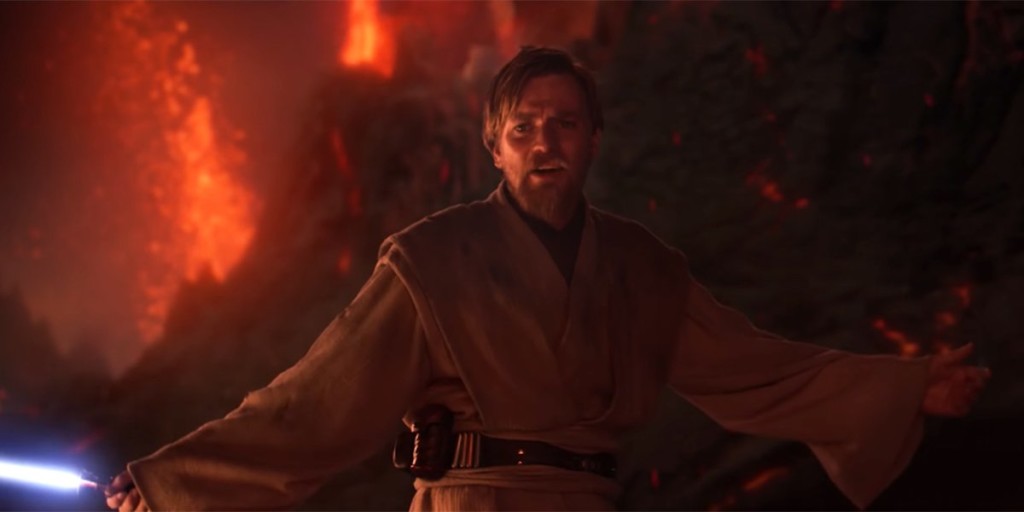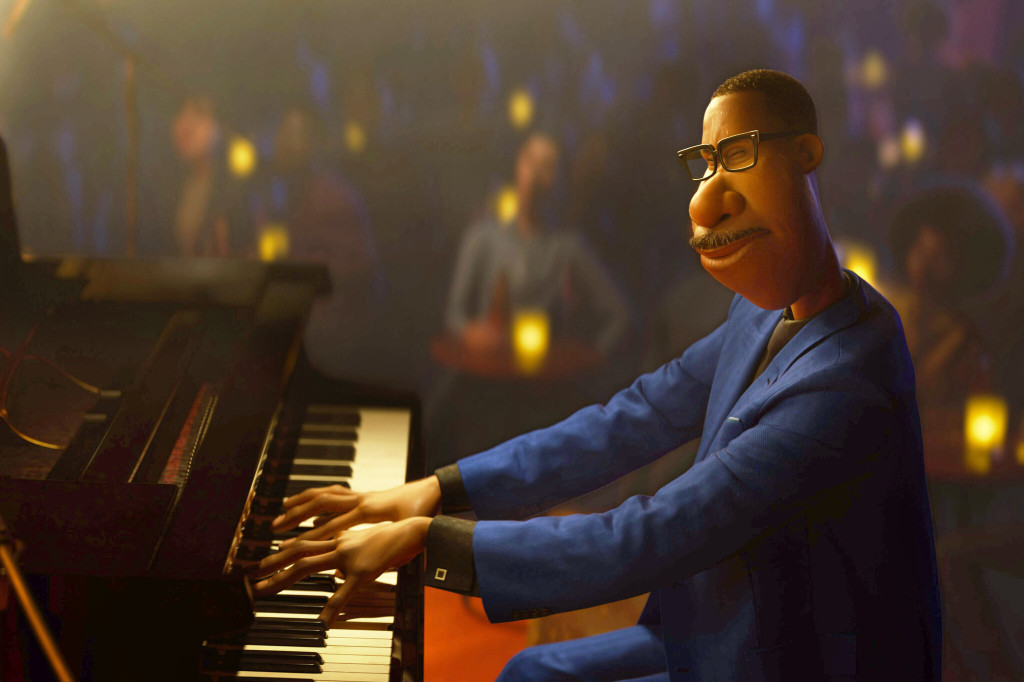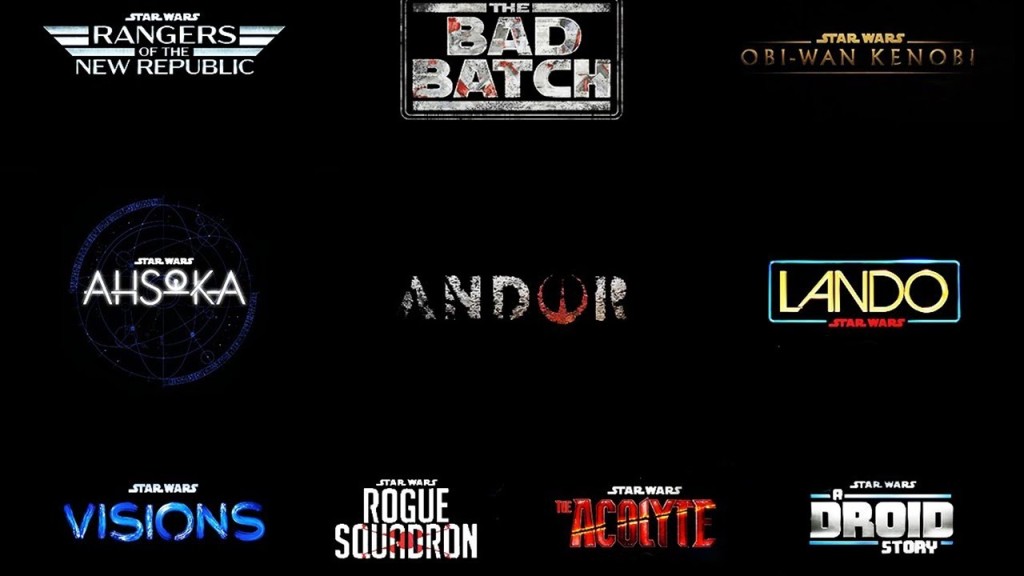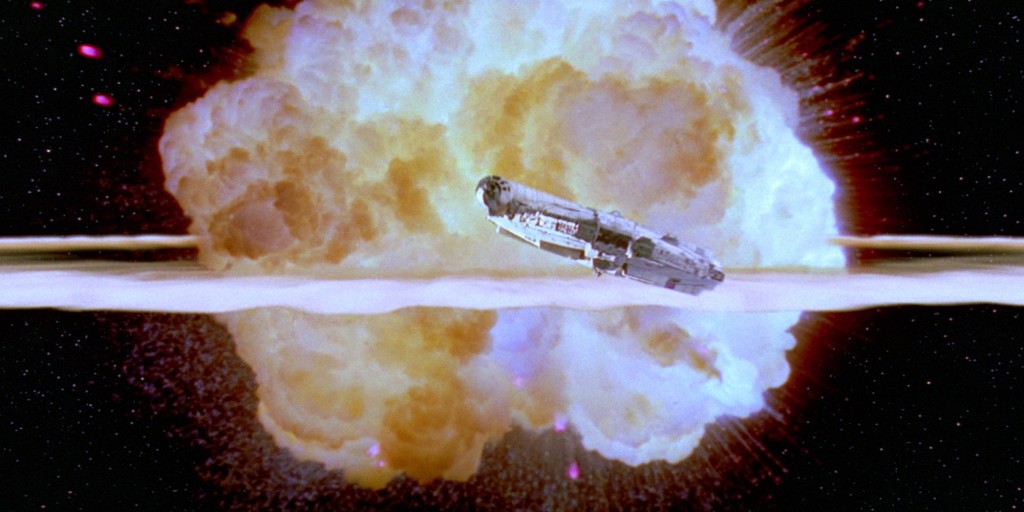Search Results for: star wars week
Sci-Fi Showdown is only ONE WEEK AWAY!!! ENTRIES DUE NEXT THURSDAY!
Guys!
Do I need to remind you that NEXT THURSDAY is the DEADLINE for the Scriptshadow Sci-Fi Showdown? That’s when the five best sci-fi concepts submitted to me will be published here on the site, along with the scripts, and then you, the readers, will read and vote for your favorite screenplay. The winner will then get a review from me the following week. More importantly, if the script is good, we’re going to try and get it made! As in produced! So, if you’ve got a sci-fi script that you think is great, get it tuned up and send it to me by next Thursday.
What: Sci-fi Showdown
When: Entries due by Thursday, September 16th, 11:59 PM Pacific Time
How: Include title, genre, logline, Why We Should Read, and a PDF of your script
Where: carsonreeves3@gmail.com
I was trying to think of the most influential tip I could give you to dramatically improve your sci-fi script in one week, and I realized that if you can write one great sci-fi set piece scene, it can have a gigantic impact on how the script is received. That’s because a great set piece can be the motivator for why someone wants to produce your film. If they fall in love with just that one 10 minute scene, and have this vision of how awesome that scene is going to look in a movie theater, that could be the driving force that leads to a sale.
But before we can identify what makes a good sci-fi set piece, let’s talk about what makes a bad one. The worst set pieces are generic set pieces. A generic situation where people are shooting at each other. A generic car chase or motorcycle chase through a city. A generic fighting scene. There’s no form to these scenes. There’s no creativity to these scenes. They’re unimaginative time-wasters masquerading as entertainment.
The worst example of this is when you have one army on one side of the screen and another army on the other side of the screen and they race at each other, and in the trailer, they always cut away right before the two sides collide. That’s the epitome of a generic uncreative set piece. The reason I can say that with confidence is because nobody on this board can point to a single memorable moment in any of those scenes – Avengers Endgame, Ready Player One, Aquaman, Attack of the Clones – that occurs after the two sides begin fighting. It’s all a bunch of big boring generic nonsense.
These scenes don’t even play well on the big screen. But they play 100 times worse in an actual screenplay. Because we can’t see what’s going on. For these reasons, I want you to follow a simple formula to create a good sci-fi set piece (or any set piece for that matter)
1) GSU – The key character in the set piece should have a GOAL. If they’re not after something within the set-piece, nothing else will work. From there, you need the goal to be IMPORTANT. The stakes must be high. Everything’s going to feel a lot more important if the character is after a cube that has the power to destroy the universe than if they’re after a crispy chicken sandwich from Chick-fil-a. And, finally, add a time constraint (urgency). At the end of Star Wars, Luke doesn’t have all the time in the world to blow up the Death Star. There are mere seconds before the Death Star will have a clear shot at the planet Yavin. So Luke needs to destroy the Death Star NOW.
2) Based on your concept – This is a must for sci-fi. Figure out what’s unique about your concept and give us set pieces that COULD ONLY EXIST inside your movie. There are very few moments in the chase scenes from Mad Max Fury Road that felt like they could exist in another movie. Every aspect of the chase felt specific to the Mad Max universe. Check out Rossio’s recent “Timezone” spec sale to see another writer write set pieces that are specific to that concept. I would even say that Rossio is a master at that.
3) Contain your space – How you utilize space is the secret weapon for great set pieces. From the quickly condensing space in the Star Wars trash compactor scene to Captain America’s elevator fight in Winter Soldier to the first alien attack in James Cameron’s “Aliens.” A contained space provides structure. Whereas a big spread out area can be harder to manage and, therefore, get messy. The hardest thing about writing set pieces, in my opinion, is conveying to the reader what’s going on, because what’s going on can often spiral out of control. I mean, imagine writing what was going on in one of those giant Lord of the Rings fight sequences. Nine readers out of ten are not going to be able to keep up with the million and one things happening on screen. So utilize contained space where you can with set pieces. It can do wonders. It’s also a lot cheaper!
4) Imagination – Most writers don’t think that hard about their set pieces and, as a result, you get the same freaking set pieces you always get. I can’t stress this enough. Your set-pieces are your key selling point for a sci-fi movie. They’re where you get to show off what a great idea this is. So you really have to invest in them. Don’t stop until your top 3 set pieces feel like something we’ve never seen before. In the newsletter, we talked about the 5 million dollar spec sale for Deja Vu. A big selling point in that script was the car chase scene where the hero was chasing the bad guy but they were both in two different time periods. That’s an imaginative scene.
What’s a successful set piece that utilized most of these things? The Thor vs Hulk fight in Thor: Ragnarok. We have the contained space. We have the goal (fight to get out of here). The stakes (fighting for their lives). I’m not sure if there was a time constraint on that scene but it was so well constructed in every other area that it didn’t need one. It’s also a good example of how powerful a great set piece can be because that scene sold an entire movie. It was the centerpiece of every trailer. Which is a good thing to think about when writing your own set pieces: Would this scene be the centerpiece of a trailer? Could they sell the whole movie on it? When the answer is yes, that’s when you know you’re onto something.
Another one is the famous T-1000 truck chase sequence in Terminator 2. You may have never realized this until now but that was a classic SPATIALLY CONTAINED scene. The chase doesn’t happen out on a highway, like a boring Michael Bay chase scene. It happens in this contained space with these inescapable walls on either side. Which wasn’t just different, by the way. It added to the intensity of the scene because it gave the Terminator and John Connor no way out. It’s why it remains, to this day, one of the top 5 sci-fi set pieces of all time.
A lesser known set piece is the car-attack scene in Children of Men, which is contained in TWO WAYS. We’re cramped inside this car with five characters who are trying to escape. And then the car itself is contained by this tiny road in the forest. When they’re then ambushed and have to reverse out of the attack, there’s only one place to go. Backwards, up the very same road they came down. It works so well specifically because of how much Alfonso Cuarón focused on containing the set piece.
What I need you to do is spend the next three hours thinking up a big fun set piece THAT COULD ONLY HAPPEN IN YOUR MOVIE due to the fact that it’s so organically connected to your concept. And then apply as many of these above rules as you can. You might not be able to use all of them. But you should be able to get most of them in there. If you do it right, you’re not only going to come up with a great scene, you’re going to come up with a scene that SELLS why your movie should be made.
Good luck! ONE WEEK LEFT!!!
It’s taken 45 years to do, but Scriptshadow has finally decoded the secret to Star Wars’s success. And now you can use this secret in your own screenplays!
It’s been a while since I’ve posted about Star Wars, mainly because there hasn’t been a lot of Star Wars to talk about. The Lucasfilm team seems perfectly okay with hiding out on Dagobah for the time being, tired of the Twitterverse questioning every move they make. As they reboot, they’d be wise to read this article, as I believe it holds the key to making Star Wars great again. Or any movie for that matter.
And really, it comes down to one of the most basic concepts in storytelling…
THE ACTIVE CHARACTER
One of the things you hear me talk about all the time on this site is ACTIVE CHARACTERS. An active character is someone who PUSHES FORWARD to achieve a goal. The reason active characters are so important to movies is because when a character is pushing forward THEY ARE TAKING THE PLOT ALONG WITH THEM. You can’t go after Thanos without bringing the entire plot of the movie along for the ride.
That’s why active characters are so valuable. Their actions write the movie for you. The second you switch to reactive or, worse, passive characters, you’ll notice your plot begin to stall. This is why you hear me rail against “waiting around” narratives. If your story is about, say, a couple of friends in a small town who are just trying to survive the boredom of summer, you’re dealing with two passive characters. And since they aren’t going anywhere, neither is your plot.
The use of active characters should extend beyond your hero, though. Ideally, you would like your villain to be active as well. The idea is that on one side you have your hero, who’s actively pursuing his goal. On the other side, you have your villain, who’s actively pursuing his goal. Then you construct the story in such a way that these two goals collide. That’s what causes all the conflict in the movie, is the constant intersection of those goals.
This is why Die Hard remains, to this day, one of the greatest movies ever. On the one hand you have John McClane, who’s trying to save his wife (his active goal). On the other, you have Hans, who’s trying to steal a bunch of money (his active goal). And those two goals collide. John cannot achieve his goal without interrupting Hans’s pursuit. And Hans cannot achieve his goal as long as John keeps getting in the way. Where those goals collide is the playground through which you explore your story.
But you can go one step further! What if it isn’t just your hero who has a goal and your villain who has a goal… but your main supporting character who also has a goal? What if you made him active as well?! This is where you start to see seasoned screenwriters pull away from the amateur crowd. Most amateurs are able to apply everything I’ve talked about so far. However, that’s where they stop. They make sure the hero is after something, the villain is after something, and they’re done.
Working screenwriters understand that the more active characters there are in your movie, the more opportunity there is for ACTIVITY. For PLOT. For CONFLICT. For ENTERTAINMENT. There’s more ON THE LINE. The idea is, the more people you have pushing on your story (active characters create “push”), the more energy your story is going to have.
Which leads us back to the original Star Wars, which I realized the other day may have the most active set of characters in movie history!
Check it out.
To start things off, we have R2-D2. He’s our original ACTIVE HERO in Star Wars. He has the Death Star plans that he must deliver to Alderran. R2-D2 is determined to secure an escape pod and shoot down to the planet of Tatooine NOW.
Following immediately behind R2-D2 is Darth Vader, our villain, and arguably the character in Star Wars with the strongest goal. He has to retrieve those Death Star plans before they make it into the hands of the Rebellion or else the Empire is doomed.
Our next active character is Obi-Wan. When he receives Princess Leia’s message, he becomes the primary active character in the script. He must deliver R2-D2’s Death Star plans to Alderaan. So now he’s squarely on the active train.
Of course, not far behind is Luke. Remember, Luke isn’t active at first. He’s stuck on the farm, unable to leave. But when his aunt and uncle are killed, Luke is all about helping Obi-Wan. From that point on, he becomes an extremely active character.
Next up we have Han Solo. Han could’ve easily been constructed as a passive pilot – a character merely meant to transfer Obi-Wan and Luke from Point A to Point B. But what fun would that be? Instead, Lucas gives Han his own goal. He owes Jabba the Hut a ton of money. Obi-Wan is giving him some of the money now and the rest after they achieve their mission. So it is extremely important that Han succeed. Now HE’S a super-active character.
Finally, you have Princess Leia. Princess Leia was technically an active character before anyone, since she’s the one who initiated the mission to get the Death Star plans to Alderaan, inserting them into R2-D2. But because she’s captured early by Vader, she doesn’t get a chance to display her activeness. However, the second they rescue Leia, she arguably becomes the most active character in the group, blasting open walls to create escape opportunities and making sure they get to the Rebel base in one piece.
Every single main character in Star Wars is EXTREMELY active.
I don’t think that’s an accident. I think it’s a major contributor to why the movie is one of the best of all time. Again, whenever you make a character active, you are inserting a unit of ‘forward-moving energy’ into the story. The very nature of activity is that you are attempting to push something along. So it makes sense that with every additional active character, you are adding more energy to the mix. At a certain point, if that many characters want something, your movie is this giant blinding force of energy that can’t be stopped.
Now it’s important to remember that not all activity is created equal. Someone can be active by painting their house in hopes that it will look nice when the in-laws visit for the weekend. Someone else can be active by hunting down the man that kidnapped their daughter. No matter what you do, Active Kidnapper Hunter is always going to inject more energy into the script than Active Painter Husband.
The more intense the activity, the more energy there is in the story. That’s where Star Wars separates itself from other movies. Not only are there so many active characters, but all of them want their goal so badly that they’re bringing an insane amount of energy to the picture.
Something to keep in mind here is that Star Wars is a variation of The Hero’s Journey. The Hero’s Journey is just like it sounds. It’s a character going off on a journey. I bring this up because it’s always easier to make characters active when they’re on a journey. That’s because it’s hard to physically move from Point A to Point B of a journey without some level of activity.
In other words, Star Wars has an advantage. Its story is built around an “active-friendly” premise. It encourages active characters. You might not have that opportunity if you’re writing a contained thriller. But that doesn’t mean you shouldn’t try to write active characters. In fact, I would always start out with any character you create, trying to make them active. I don’t care if it’s the hero or the 8th most important character in your script. Active characters create plot opportunities. Passive characters wipe story out. It’s hard to come up with plot ideas if your characters aren’t leading the charge.
And just to be clear, I understand that every movie is different. Empire Strikes Back’s first 20 minutes is technically a “waiting around movie.” But the reason it works is because at least one major character, Darth Vader, is actively pursuing something. He’s trying to find the secret rebel base which he will then attack. So even if you can’t create a plot where everyone is active all the time like Star Wars, make sure that as many of the major characters are actively pursuing something as you can. That’s why, instead of completely waiting around in the first act of Empire Strikes Back, they had Luke get attacked by the Wampa. That gave Han a goal (find Luke) which allowed him to be ACTIVE.
I’ll finish up by asking the question again. Is it any coincidence that the greatest movie of all time has six of the most active characters of all time in it? I don’t think so.
Carson does full screenplay consultations as well as consultations for pilots, loglines, outlines, treatments, whatever you’ve got! If you’re interested in getting a consultation, e-mail carsonreeves1@gmail.com with the subject line “Consultation.” Looking forward to working with you!
Hello everyone. I wasn’t going to post anything this week but after watching Wonder Woman 1984, I couldn’t help myself. By the way, this is a stream-of-consciousness post, so I’m sorry in advance if it’s as nonsensical as the movie I just saw. Wonder Woman 1984 is one of the worst superhero movies I’ve ever watched. In fact, it’s so bad that I can’t think of any superhero movie that’s worse at the moment. Literally, the first 70 minutes of the movie is setup. We’re talking blatant 100% exposition setup. Diane meets Steve again. Some geeky girl finds a wish machine. Some oil magnate goes looking for the wish machine. For some reason, we go to Saudi Arabia on an invisible plane. Saudi Arabia then has a wall around it. I mean this was comically awful screenwriting. And you don’t get the excuses anymore. Marvel has solid scripts for all its superhero movies, which is why they all get near 90% RT scores. But this? It was as if not a single person challenged Patty Jenkins on how bad the screenplay she was writing was.
And that’s why I’m posting this article. Patty Jenkins is responsible for the next Star Wars movie. About X-Wing fighters or something. Why is Patty Jenkins responsible for the next Star Wars movie? Was there a single Star Wars fan in the universe who said, “I hope they get Patty Jenkins to direct a Star Wars movie.” No. Not one. So why was she chosen to not only direct a Star Wars movie but shepherd the next wave of Star Wars feature films for Disney? Maybe they really liked her pitch? Maybe it was for another reason. The only one who knows for sure is the person who’s slowly sucking the life out of Star Wars with every decision she’s made, Kathleen Kennedy. But, surely, after seeing Wonder Woman 1984, you have to kill this Patty Jenkins Star Wars project, right? There’s still plenty of time to do so. And Kennedy has fired people way further into the process. If her number one priority is making a quality Star Wars film, she has to fire Jenkins. If her priority is something else, she’ll keep Jenkins on. She better make the right decision because I haven’t seen a lack of narrative thrust in a major motion picture as abysmal as Wonder Woman 1984 in over a decade. It’s literally first year film school student “I don’t know how to tell a story” bad. And you’re going to let this person direct the next Star Wars movie???? Oh my god.
The weekend wasn’t all bad as Pixar released their latest film on Disney +, “Soul,” and, unlike Wonder Woman 1984, Pixar actually cares about storytelling. Not only that, but this is the weirdest Pixar movie yet. It’s about a music teacher who wants to become a Jazz pianist and gets a shot at a major gig but ends up dying after the audition. He somehow avoids going to Heaven, and plummets into the “before” version of Heaven where little souls are preparing to go down to earth and become humans. He meets a soul there who hates earth and doesn’t want to become human, and then the two end up back down on earth, but the hater soul ends up in the jazz musician’s body while the jazz musician ends up in a therapy cat’s body (yes, you read that right), and the two team up to get the musician to that gig.
One thing Pixar does more and more of that I tell writers NOT TO DO is they overcomplicate things. There is so much world-building and mythology and rules that need to be established here, it’s kind of overwhelming. And they never do things the easy way. Which is harder to execute but better for the story. For example, when the two get thrust back to earth, the jazz pianist doesn’t end up in his body. He ends up in a cat’s body. It’s so weird but it’s that weirdness that makes Pixar movies different from anything else out there. They also do an amazing job with exposition. Exposition is a top 5 enemy for any screenwriter. But the reason Pixar gets away with it is that a) the things they expose are usually interesting. This whole “before dimension,” for example, is an interesting place. So we’re willing to learn about it. And b) they show instead of tell as often as possible. One of my favorite expositional pieces was the “lost souls.” These are people down on earth who have lost their way. And here in the “before dimension,” they’re represented as these spooky one-eyed monsters who trudge around this dark space endlessly. It really captured what a lost soul would look like.
I don’t think everything comes together as cohesively as it could have. But Pixar does such a great job making you care about its characters that you overlook those weaknesses and just go with it. I’m not sure where “Soul” ranks on the list of Pixar movies, but it might creep into the top 5. It’s really different and, unlike other family movies, you don’t know where it’s going. It really does surprise you again and again. Check it out if you have Disney +!
While the trades couldn’t stop talking about all those Marvel and Star Wars projects announced Thursday, a much bigger story wasn’t being talked about at all. That is the story of Disney dropping the hammer down on Netflix. There was nothing that announcement said more than, “We’re coming for you.” Specifically, Disney plans to show Netflix how powerful big IP is. Seriously, guys, this feels like when everyone had a Blackberry and Apple announced they were moving into the phone market. That’s how much Netflix needs to be freaking out. There are lots of people out there who don’t know Disney + exists. That’s about to change with this lineup, which I’m going to go over with you.
But I’m only going to go over the Star Wars stuff. I’m not enough of a Marvel fan to care about their shows. I can’t tell if Wandavision looks interesting or just plain weird. I’ve seen two trailers now and I still don’t know what the show is about. Falcon and Winter Soldier feels like a spinoff of the guys nobody cared about in the movies. If I were forced to watch one of the Marvel shows, I’d probably choose Loki. That one looks like they’re having a lot of fun.
ROGUE SQUADRON (MOVIE)
Rogue Squadron may be the single safest choice Disney could’ve made coming back to the Star Wars feature world with. Everything about this movie screams “neutral.” The director, Patty Jenkins, is neutral. The subject matter, pilots, is neutral. The title is neutral. This is obviously an overcorrection after all the divisive Star Wars content that came out over the last six years. And for that reason, the movie just doesn’t sound that exciting. When I think of a movie about pilots, I think of being stuck with someone in a cockpit for two hours. Why would I want to watch that? There’s some cool backstory here about how Jenkins’ father was a fighter pilot and died in the line of duty. So it’s not just like they’re bringing in anyone to tell the story. Jenkins has an emotional connection to the material. But something tells me this movie’s purpose isn’t to be good, but rather as inoffensive as possible.
ANDOR (SHOW)
For a movie that reportedly put endless amounts of blood, sweat, and tears into its character creation, there wasn’t a single memorable character to come out of Rogue One. For that reason, when they originally announced Andor, I thought it was only a matter of time before they cancelled it. But by gosh, according to this teaser, they’re still making the thing! While there is some appeal in a character who exists in the seedy underbelly of the Star Wars universe, we kind of already have that with Mandalorian. I don’t know. Maybe Mando will let Andor borrow Baby Yoda for a few episodes. That’s the only way I see people watching this thing. Or give Moroff more time. Team him up with Babu Frik. Now you’re talking.
NO BOBA FETT SHOW
One of the most shocking announcements of the Disney Investor Day was a non-announcement. They’re making ten new Star Wars shows and one of them isn’t Boba Fett?? Something smells womp ratty here. My guess is that they’re on the fence with whether to give Fett his own movie or his own TV show and they still haven’t come to a decision. They probably wanted to see how audiences responded to him on the Mandalorian first. Another possibility is he stays on Mandalorian. With the rumors of Pascal wanting out of the role, we may be gearing up for a season finale shocker of Mando dying and Boba taking his place? That would be wild.
LANDO (LIMITED SERIES HOPING TO BECOME A FULL SHOW)
Okay okay okay okay okay. Let me get this straight. Solo was the biggest Star Wars bomb ever. Donald Glover was utterly forgettable as young Lando in the film. And now you want to make a series about the character? I suppose they haven’t announced Glover in the role which means they might recast it. But this is where someone needs to step in and say, “Just because we can make 50 different Star Wars shows doesn’t mean we have to.” Can’t we just put Lando in that Andor show? Get rid of two characters we don’t care about in the same show? That’s my vote.
ASHOKA
Ashoka won me over in Episode 5 of The Mandalorian so I’m down for her getting her own show. Also, what Disney plans to do is have crossovers between Ashoka, Mandalorian, and a third show called Rangers of the New Republic. That one is going to star Cara Dunne, the MMA fighter girl from Mandalorian. They’re going to need to find some more characters though cause if they’re resting that show on the acting chops of Gina Carano, that’s going to be a quick one-season-and-out, I can promise you that. But I do like the idea of crossing over. Star Wars is finally getting a chance to do what Marvel’s been doing for years.
HAYDEN IS BACK AND HE FINALLY HAS THE HIGH GROUND!
It was announced that Hayden Christensen will be back as Darth Vader in the Obi-Wan Kenobi limited series. I guess that’s cool news. Hayden was one of those actors who got infected by the Star Wars curse. He hasn’t done much work since Episode 3. And yet I’m kinda surprised he’s coming back. It’s a role he ran away from after the prequels. He’ll be acting under a mask when he does return. And then there’s that whole problem about Darth Vader saying he hasn’t felt that presence “in a long time” in regards to Obi-Wan in A New Hope. Well, apparently, if Disney has their way, “a long time” is going to end up being last week.
THE ACOLYTE
This is that Leslye Headland project, which we’ve now learned will take place during the “High Republic,” or 200 years before the prequels. While I was confused why they gave Headland (noted for her dark indie sensibilities) a Star Wars show in the first place, things are starting to make sense, as her show is supposed to focus on the dark side of the Force. Also of note, this is going to be the first of what Disney hopes to be lots of projects coming out of this era. Headland will be spearheading a whole new mythology with fresh unique characters we haven’t seen before. Although you bet your ass Yoda will somehow show up in one of the episodes. By the way, an acolyte is a person assisting the celebrant in a religious service or procession. For whatever that’s worth.
REST OF PROJECTS
Taika’s movie was mentioned (which is being written by the co-writer of 1917, btw) and it looks like it’s going to be the second Star Wars film released after Rogue Squadron. I’m reading the tea leaves here but doesn’t this smack of the same issues the feature side of Star Wars was dealing with before? A lack of vision? We’re going to do a fighter pilot Star Wars and then we’re going to do a weird Taika Star Wars and then we’re going to do that Kevin Feige Star Wars. Whereas, on the TV side, they have a clear plan, they still seem lost when it comes to movies. Oh, I almost forgot. The new Indiana Jones movie! You gotta love how much Harrison Ford loves Indiana Jones. The guy’s landing planes on taxiways but nothing’s going to stop him from playing Indiana Jones again yer darn tootin. I would love to hear your pitches for another Indiana Jones flick. What else is there for him to do??
I had a giant screenwriting revelation this week.
Anybody who’s gone through a good revelatory moment knows that it’s exciting but also terrifying. Terrifying because any new revelation strips down at least part of your belief system. It forces you to rethink everything. And this one, this one I was sure I knew how to do right. Now, I’m not so sure.
How this came about is that I was reading a few screenplays for the contest and they were all really boring. Not bad, mind you. But boring. Bland. Lifeless.
What makes a script boring? A number of things. But the primary one is that the story is predictable. We’re always ahead of the writer. The reason so many writers, both amateur and professional, write these boring predictable scripts is because they map out the story from start to finish. They then go in, follow the map, and because the route has been so carefully planned ahead of time, there is no spontaneity to the story. There are no unexpected twists (except for blatantly manufactured ones – “the agent’s handler is actually the villain!”). There are no surprising developments. How could there be when you’ve constructed a series of events that are a carbon copy of events from movies we’ve already seen?
I began to think, what’s the problem here?
Why do I read so many scripts that have this issue? And why are writers so blind to it?
And here’s where my revelatory moment came.
It’s because too many writers know their ending before they start writing.
You’ve heard me espouse before not to start your screenplay until you know your ending. The advice sounds good in theory. If you don’t know where your script ends, how do you know where to place your characters in the meantime? Knowing your ending allows you to come up with a clean goal-driven narrative. Luke Skywalker blows up the Death Star. Okay. Now I just have to come up with the story that gets him to a point where he has the opportunity to blow up the Death Star.
However, here’s the catastrophic problem with knowing your ending before you begin.
If you know where you have to deliver your character, you will never put them into any situation that will seriously impede your ability to deliver them there.
For example, a couple of weeks ago, I reviewed a script called Video Nasty about a brother and sister who get stuck inside a horror movie. The script was okay. I think I gave it a low ‘worth the read.’ But it wasn’t memorable by any means. And a big reason for that is this problem. The writer knew, before he started writing the script, that the brother and sister were going to escape the movie and be okay at the end.
So let’s say, midway through writing the script, around the midpoint of the story, the writer thought to himself, “Man, it would be really great right here to kill off the sister. It works thematically and it will shock the audience.” But he can’t do that. He won’t do that. Why? Because he has it locked into his head that the brother and sister get out at the end. So, instead, he writes a scene where the killer corners the sister in a house and almost kills her but she gets away. The scene is average because it’s handicapped by that locked-in ending. We can’t put her in too much danger because then my ending is compromised!
Now let’s say the writer went into the script NOT KNOWING the brother and sister get out at the end. In that situation, he is more likely to follow his gut when writing. He’ll kill off the sister and figure it out later. Also, because his brain is open to any possibility, he may figure out a way to bring her back from the dead! If the brother and sister are stuck in a movie, and movies aren’t real life, then a death may not be a death. Now maybe he figures out a way to bring the sister back or maybe he doesn’t. The point is, he’s created a less predictable story this time around because he’s not beholden to that set path.
As I delved deeper into this, I realized it extended beyond the ending. If you figure out your midpoint ahead of time. If you come up with some major twist you want to happen at a certain page. You will now be writing towards those moments, and, without realizing it, creating predictable mini-narratives. Once you determine any outcome, you’re never going to write anything that steers you too far away from that outcome.
All of this led to the realization that, oh my god, knowing your ending is creating an endless stream of predictable screenplays! Even worse, any exercise that sets checkpoints in stone – such as outlining – is a creativity killer! They keep the script on the road when everybody knows the best moments always happen when you go off-road.
However, here’s why it’s not so simple. Not knowing anything that’s going to happen in your script is just as bad. It creates a different type of problem. Without outlines, writers lose steam around the 45-page mark. It’s hard to make something out of nothing for 110 pages straight. You need SOME direction or your script becomes a rambling mess.
I can’t stress that last point enough. The unstructured equivalent of the “bland predictable screenplay” is the “rambling unfocused mess of a screenplay.” If all you’re doing is writing whatever comes to mind in the moment, your script comes across as disjointed. Mank is a good example of this. It starts out about a guy trying to write a screenplay and ends up being a political film, likely because Jack Fincher thought, “This screenwriting storyline is fun but I want to go explore this other thing now.”
Which leads us to the obvious question – What do we do about this???
I have two options for you. It comes down to what type of writer you are. Do you need structure to operate or not?
If you’re comfortable writing without knowing how your story ends, or even where it’s going to be in thirty pages, go ahead and write that way. You’re way more likely to find interesting story directions than the restricted writer. Your script is going to be less predictable and, therefore, more compelling. However, you’re going to have to do twice as many rewrites as the structured screenwriter. That’s because your narrative is going to zig-zag so much that it’ll take more time to eliminate the ideas you came up with that don’t work. And for the ideas that do work, you’ll have to go back in your story and set them all up. For example, if, like in Parasite, you came up with this on-the-spot idea that another family was living in a secret basement in the house – you can’t just throw that one in there with no explanation. You’ll have to write in hints here and there that the basement exists so that its eventual reveal is a payoff (as opposed to one of those random doesn’t-make-sense-at-all reveals you see in so many amateur scripts).
If you’re a structure person and your beat-by-beat outline is your childhood blankie and you won’t dare start your script until you know your ending, that’s fine, too. You can continue to write this way. However, you have to embrace a different psychology when you write. When inspiration strikes, follow that inspiration, even if it goes against your outline. Also, and this is even more important – you must learn the art of painting your characters into corners that you have no idea how to get them out of. The reason this is so important is because your default style of writing is predictable. In the past, that’s what’s caused you to make sure there’s always an air conditioning vent right above the corner you’ve painted your character into. You’ve created the escape plan before you’ve written the scene. And when you do that, the reader gets this feeling that the outcome has already been decided. Which saps the life from a scene. You want them thinking the opposite. “Oh my God, how are they going to get out of this?” The only way to achieve this is if you genuinely have no idea how you’re going to save your character. If you take nothing else from this article, take that. If you become an expert at that skill, you’ll write tons of captivating scenes going forward in your career.
I’m curious to hear what your responses are to this realization because I definitely think a script has more energy when even the writer isn’t sure where the story is going next. Which makes sense. If they’re not sure, how can you possibly be?

